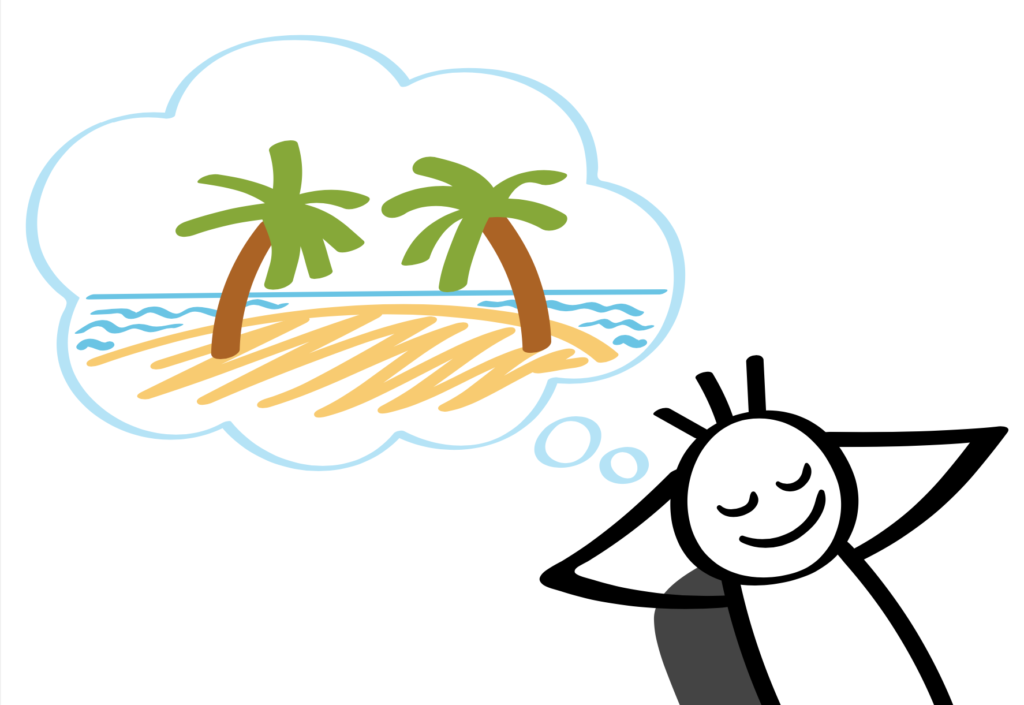
When I ask students if they ever think about lunch or something else while they are reading, most give me a thumbs up! After we get past the “shocked teacher” look, I talk to them about the importance of staying focused and monitoring for whether they are understanding the content in the source. Then I share Hoyt’s “coding strategy.”
What follows are artifacts from a lesson I gave with fourth grade students reading an article about Rudy Tolson-Garcia, a para-Olympic athlete along with a few reminders!
- Introduce a purpose for reading and the strategy with clear language about what and why. Remind students that this experience is not just about identifying a code and writing that on a sticky or in the margins of the source. This is about “thinking about our thinking” and categorizing our thinking. This will help us determine what’s important or what we need to go back and make better sense of. TIP: It’s also helpful for students to have a purpose for reading like: “How does a person with a physical disability become a world champion athlete?” This helps students monitor more easily for what’s important.
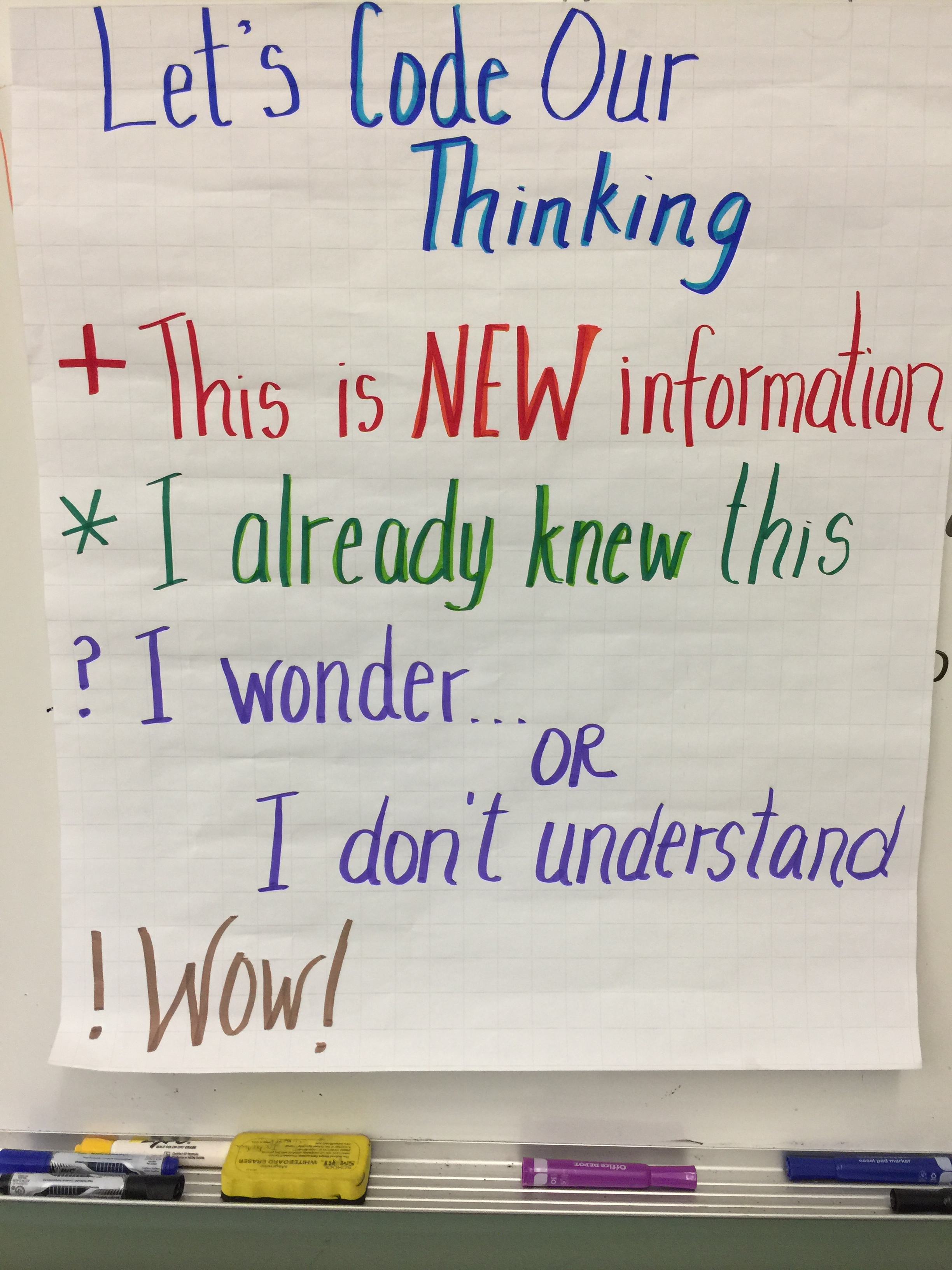
- Read aloud and think aloud for students about your own monitoring. On the sticky note in the photo, I wrote my thinking, “Wow! Rudy is an amazing athlete who has no legs!”
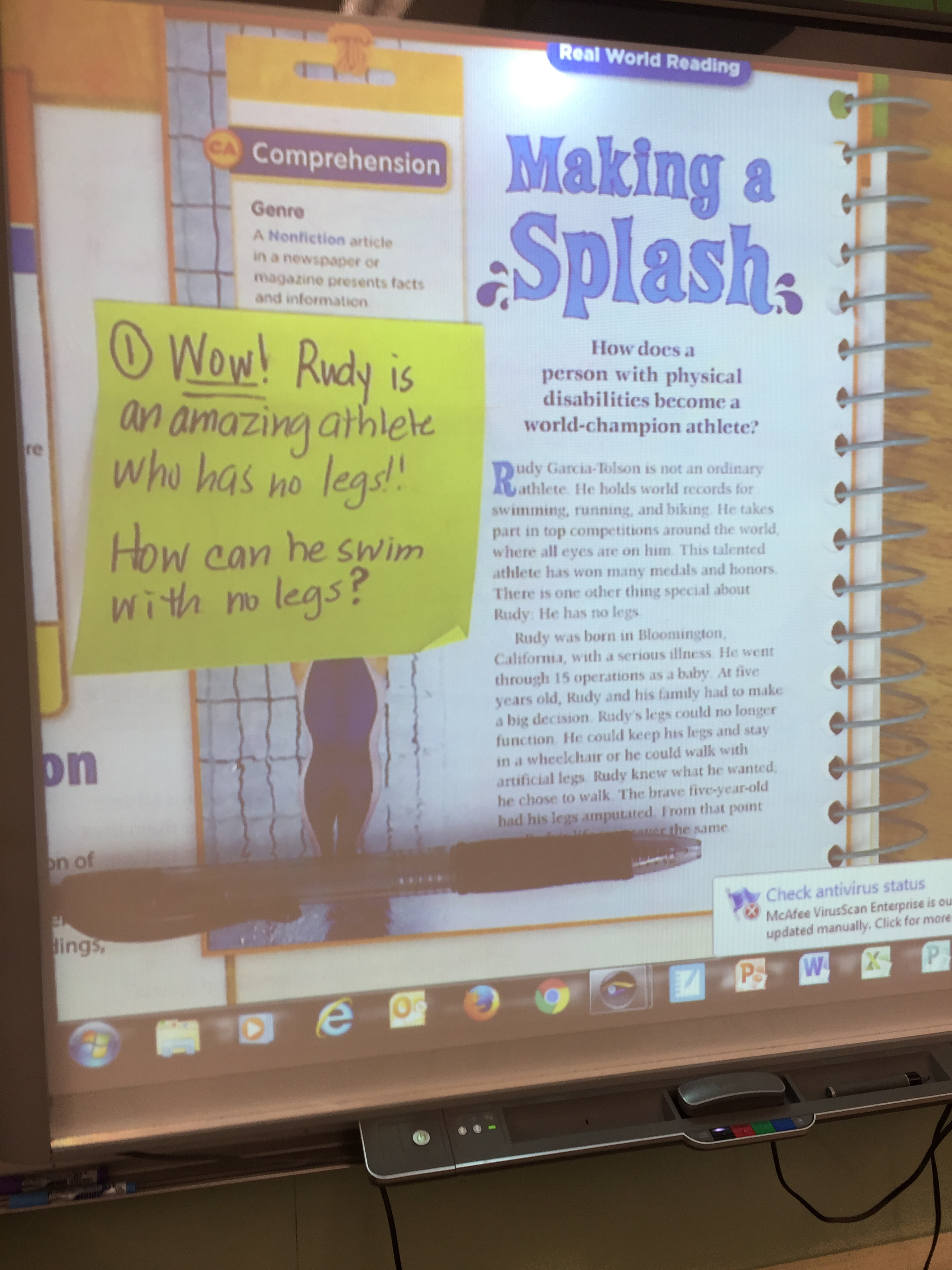
- Engage the students in reading a short section (even just a sentence), rereading, and then thinking aloud with you. In the photo above, the question at the bottom of the sticky “How can he swim with no legs?” was generated by a student in a shared think aloud with me.
- Ask students to read and think aloud with a partner, and then write.
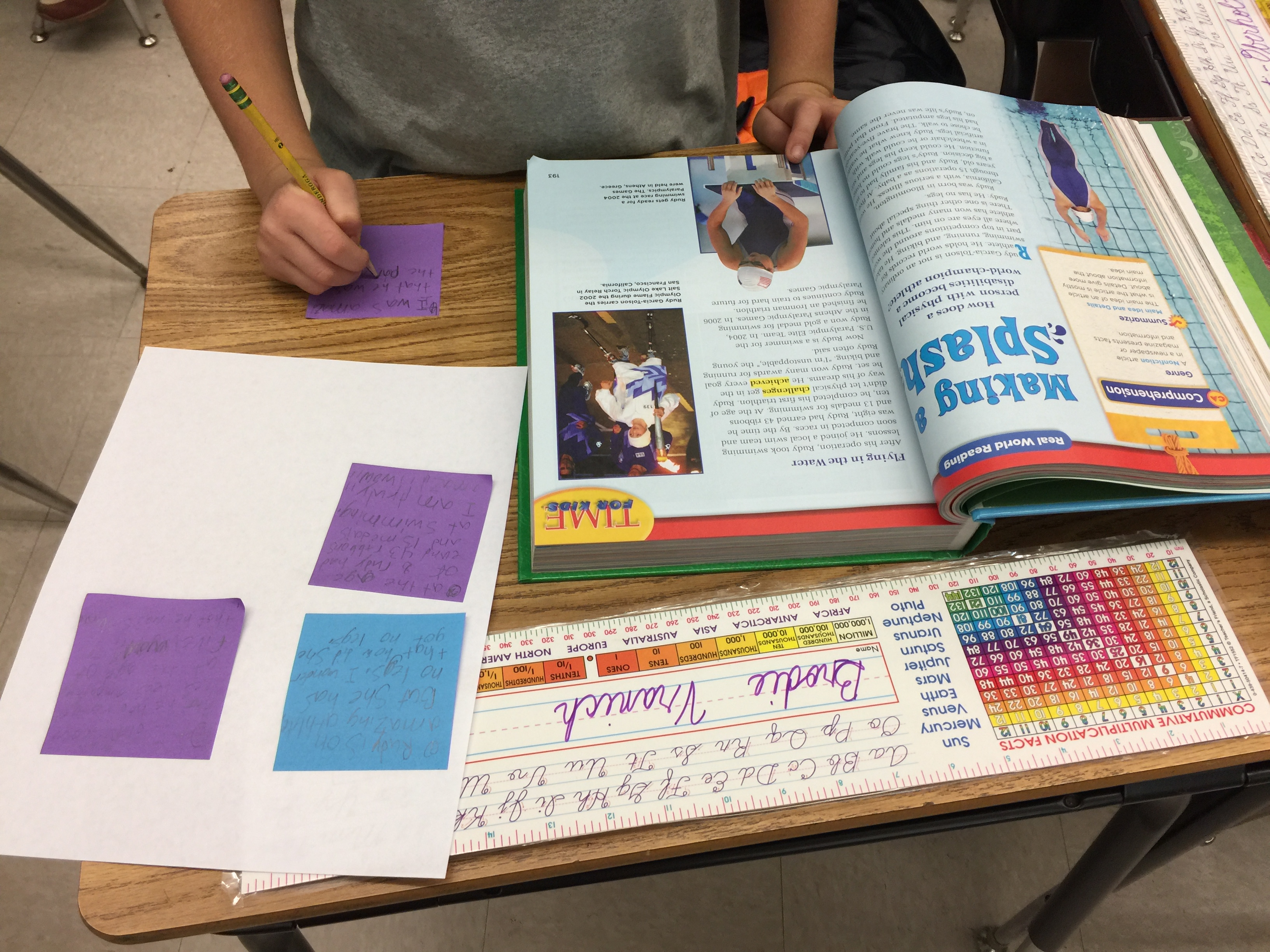
- Ask students to think on their own and lean in and confer. Take the pen if it’s helpful. Below are a few of the sticky notes students wrote. Notice my handwriting in a few of the sticky notes below. When a student is stumped or frustrated, I help them compose a note orally and then I launch them by doing some of the writing.
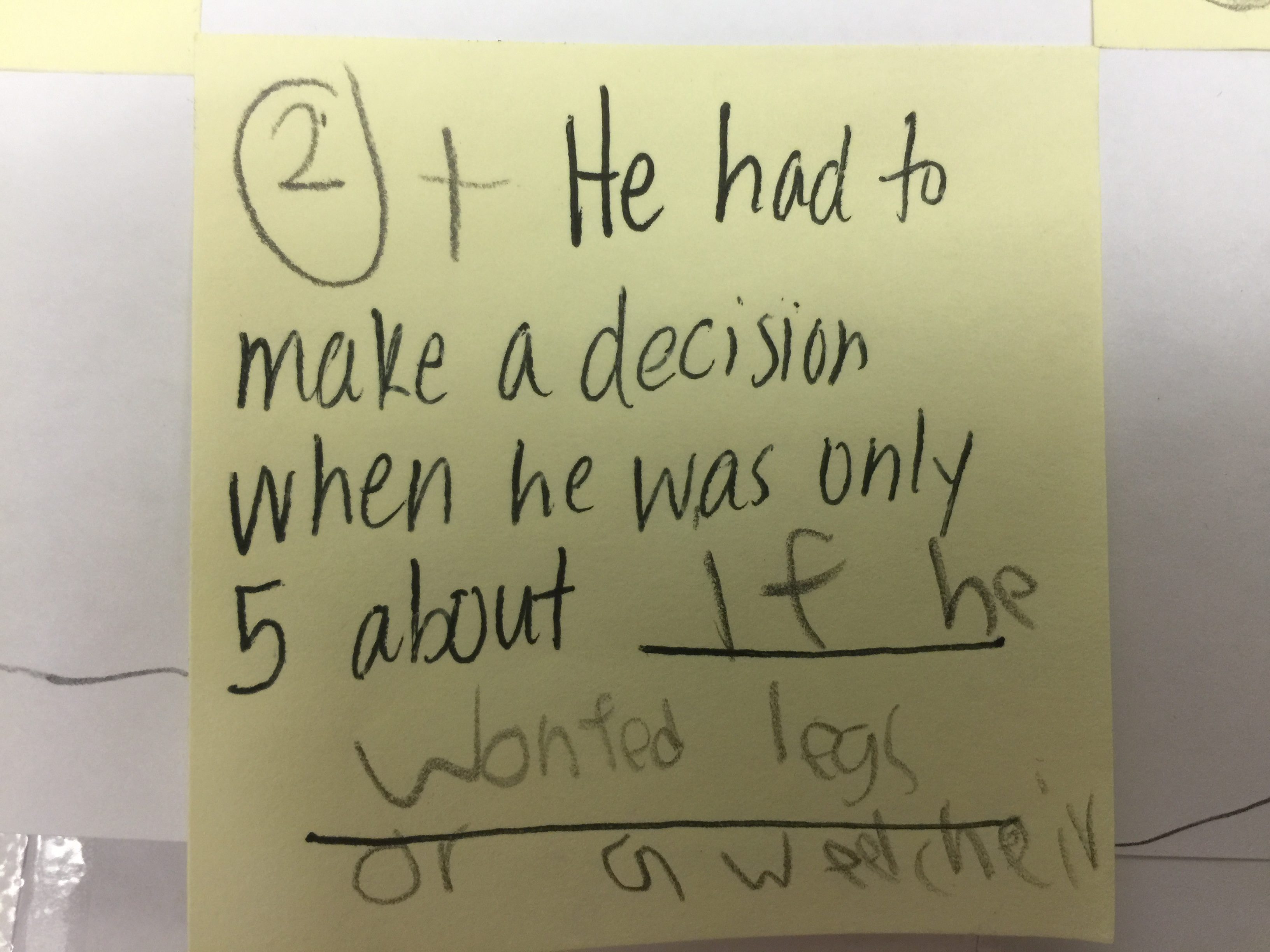
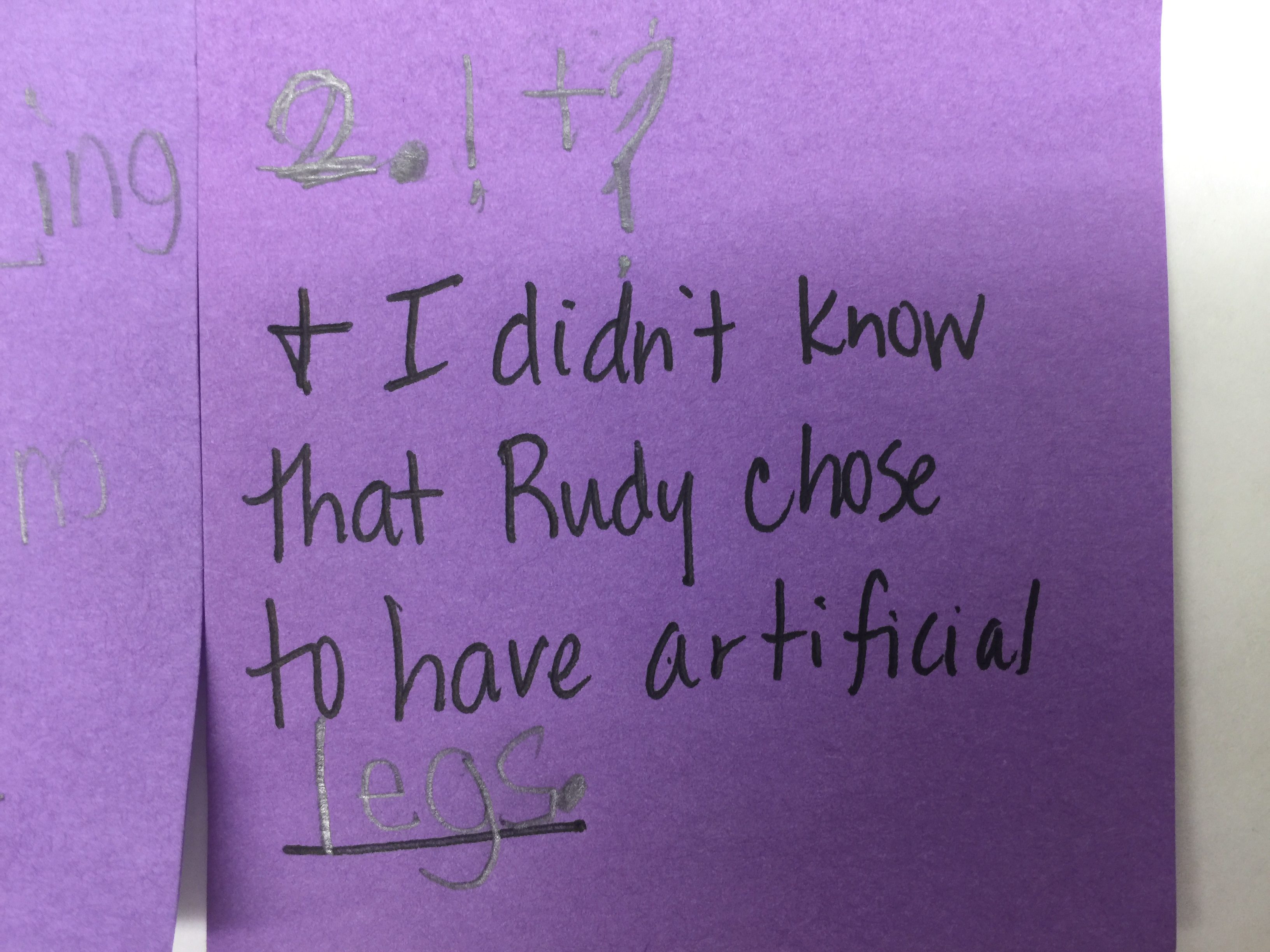
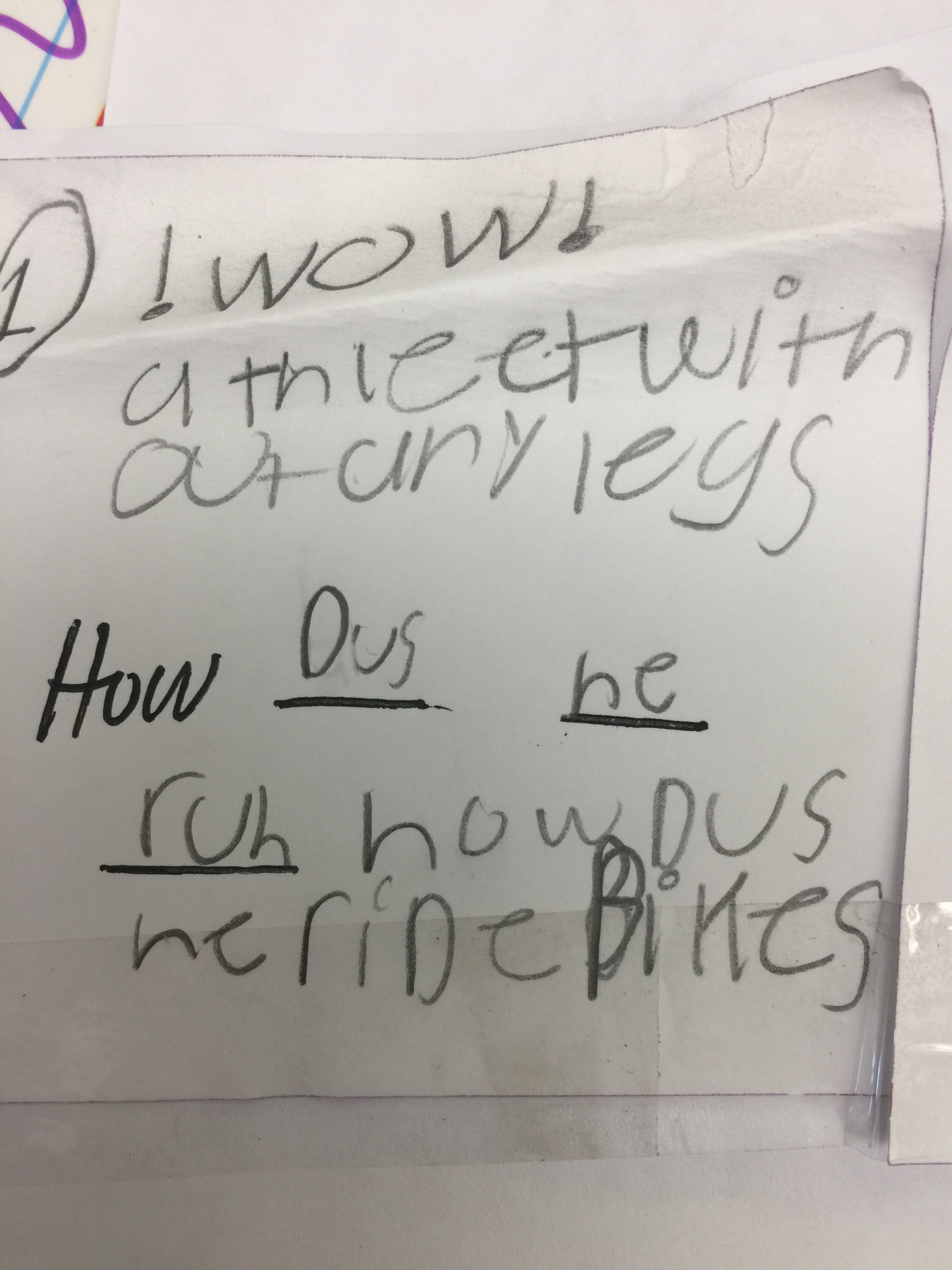
- Engage small groups in discussing the content they learned as well as how they coded their thinking. In this lesson, they talked about what they’d learned regarding our focus question or purpose for reading, “How does a person with a physical disability become a world champion athlete?”
VARIATIONS – We didn’t finish the article during this lesson. The article was four pages. We needed at least two lessons to do this. Another thought would be to ask students to read the whole article and then just code a particular section. The second part of the article about Rudy was more technical. The teachers and I agreed that the students would need to read a section and then go back in and code for each sentence.
The students and also agreed that one thought may need more than one code. It might be a “Wow!” and a “new information” thought. TOTALLY! We want them to run with this, making it their own in a way that helps them think about their thinking!
Hope this helps.
S
REVISED 4/20/2021
